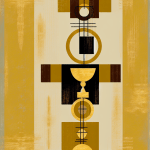A Comprehensive Overview of the History of the Crusades
The history of the Crusades is a captivating and complex narrative that intertwines religion, politics, and culture. Spanning nearly two centuries, these military campaigns—initiated mainly by Western Christians—were aimed at reclaiming the Holy Land from Muslim rule. In this blog post, we will explore the historical context, key events, significant figures, and lasting impact of the Crusades. By understanding the Crusades, we gain insights into the intertwined destinies of Christianity and Islam and the spirited nature of human conflict.
The Historical Background of the Crusades
The roots of the Crusades trace back to the late 11th century when the Islamic world was flourishing under the rule of the Seljuk Turks and the Fatimid Caliphate. By this time, the Islamic conquests had significantly expanded territories in the Middle East, including the capture of Jerusalem in 638 CE. Over time, tensions grew between Christian and Muslim communities, especially in relation to pilgrimage and access to holy sites.
The backdrop for the Crusades includes the decline of the Byzantine Empire, which faced growing threats from Turkish advances, as well as increased military organization and interregional mobility due to burgeoning trade. The socio-political climate of Europe, marked by feudalism and a burgeoning sense of nationalism, provided fertile ground for calls to action in the name of Christ.
The First Crusade: 1096-1099
The First Crusade was launched in 1095, initiated by Pope Urban II at the Council of Clermont. His rallying cry to liberate Jerusalem from Muslim rule resonated deeply with a populace eager to engage in a righteous battle and secure spiritual rewards, including the forgiveness of sins.
Key Events of the First Crusade
As thousands of knights, soldiers, and common people answered the pope’s call, they began their arduous journey eastward. The initial waves of the Crusaders were marked by a mix of fervor and unpreparedness. The People’s Crusade led by Peter the Hermit took a disastrous path, resulting in massacres of Jewish communities along the way.
In contrast, the nobles’ contingent experienced more structured engagements, culminating in the Siege of Jerusalem in June 1099. After a grueling assault, the Crusaders captured the city, leading to a tragic massacre of its Muslim and Jewish inhabitants. The establishment of the Crusader states, including the Kingdom of Jerusalem, marked a significant turning point in the history of the Crusades.
The Crusader States and Their Significance
After the successful capture of Jerusalem, several Crusader states were established, including the County of Edessa, the Principality of Antioch, and the Kingdom of Jerusalem.
The Kingdom of Jerusalem
The Kingdom of Jerusalem became the focal point of Christian rule in the Holy Land. It served as a hub for further expeditions and a base for trade between East and West, fostering cultural exchanges as well. However, the Crusader states faced persistent threats from their Muslim neighbors, particularly from the forces of Saladin, who united various Muslim factions against the Christian occupiers.
The Second Crusade: 1147-1149
The Second Crusade was partly launched in response to the fall of the County of Edessa to Muslim forces in 1144. This crusade was marked by a lack of unity and strategic planning, and although it involved notable figures such as King Louis VII of France and Emperor Conrad III of Germany, it ultimately ended in failure.
The Failure of the Second Crusade
The Second Crusade’s campaigns in the Holy Land were poorly coordinated, leading to significant losses. The Siege of Damascus in 1148 turned into a debacle, forcing the Crusaders to retreat in disgrace. The aftermath further weakened the Crusader states and emboldened Muslim leaders.
The Rise of Saladin and the Third Crusade: 1189-1192
With the rise of Saladin, the Muslim leader who united Egypt and Syria, the Crusader states faced renewed challenges. Saladin’s strategic acumen culminated in the decisive Battle of Hattin in 1187, where he defeated the Crusader army and eventually recaptured Jerusalem.
The Third Crusade
In response to this setback, the Third Crusade was launched. This campaign involved several prominent European leaders, including Richard the Lionheart of England, Philip II of France, and Emperor Frederick Barbarossa of Germany.
Key Events of the Third Crusade
Despite many skirmishes and battles, including a famous dispute between Richard and Saladin, the Crusaders were unable to recapture Jerusalem. However, they did secure coastal cities and provided safety for Christian pilgrims. The Treaty of Jaffa in 1192 allowed Christians limited access to Jerusalem while keeping the city under Muslim control.
The Fourth Crusade: 1202-1204
The Fourth Crusade took an unexpected turn, as it veered away from its original purpose—to recapture Jerusalem—and instead led to the sacking of Constantinople in 1204.
The Fall of Constantinople
Initiated by a desire for wealth and power, the Crusaders’ siege of this Christian stronghold marked a dramatic shift in the course of the Crusades. The overthrow of Byzantine Emperor Alexios IV led to an empire-wide chaos that weakened Christian authority in the region. The establishment of the Latin Empire of Constantinople exemplified this self-destructive pivot.
Later Crusades and Their Decline
Following the Fourth Crusade, several lesser-known Crusades occurred, including the Fifth through the Ninth Crusades. However, these efforts were characterized by diminishing returns, inadequate support, and lack of cohesion among the European powers.
The Fifth Crusade
The Fifth Crusade (1217-1221) aimed at capturing Egypt as a means to strike at Jerusalem, but it resulted in a stalemate and eventual withdrawal.
The Sixth Crusade: A Political Intrigue
The Sixth Crusade (1228-1229) is notable for its unique approach; led by Holy Roman Emperor Frederick II, it achieved a peaceful recapture of Jerusalem through diplomatic negotiations rather than military action.
The Failure of Later Crusades
The Seventh Crusade (1248-1254) led by Louis IX of France ended in his capture and ransom. The Eighth Crusade (1270) also failed to achieve significant gains.
The Legacy and Impact of the Crusades
The history of the Crusades greatly impacted Europe and the Middle East, shaping religious, political, and social landscapes.
Economic and Cultural Exchange
The Crusades facilitated trade between East and West, introducing new goods, ideas, and technologies. European societies were influenced by Islamic culture, including advancements in science, mathematics, and architecture.
Religious Tensions and Conflict
The Crusades exacerbated tensions between Christianity and Islam, leading to a legacy of distrust and animosity. The historic animosities rooted in the Crusades still resonate in contemporary geopolitical conflicts in the region.
The Influence on the Papacy
The Crusades also enhanced the influence of the papacy, establishing the notion of holy war as a legitimate means of expanding Christendom.
Conclusion
The history of the Crusades is a rich tapestry of ambition, warfare, and faith that shaped the destinies of empires and peoples. From the fervent zeal of the First Crusade to the despair of later campaigns, the Crusades illustrate the complexities of human motivations and the enduring struggles over faith, territory, and power. Understanding this period allows us to appreciate our shared history and the profound impacts of these historical events on modern society.
For those interested in exploring the multi-dimensional narratives of the Crusades, numerous academic resources and literature are available, highlighting the endless debates and interpretations that continue to shape our understanding of this tumultuous era. Whether viewed through a religious, cultural, or socio-political lens, the history of the Crusades remains a vital chapter in the story of human civilization.




